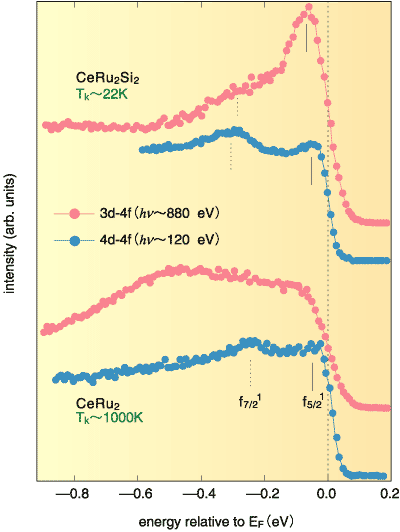 |
||
|
| It is very important to clarify the electronic structures of solids not only to understand the various properties of existing materials but also to aid in the design of functional materials. Electronic states can be studied using photoelectron spectroscopy (PES), a technique which measures the energy distribution of the photoelectrons that are emitted when materials are exposed to high energy radiation. Many materials including high-temperature superconductors have been investigated by this technique. Conventional facilities widely used in the world have significant constraints; they have insufficient resolution at high energies, and at low energies, they allow only surface sensitive measurement, even though sufficient resolution is realized. Since there is a significant difference between the surface and bulk electronic states of many solids, conventional facilities have a drawback in that they cannot obtain data about the inside of solids, which is the information most desired. We successfully demonstrated the different properties of CeRu2Si2 and CeRu2 for the first time using PES spectra measured at the public beamline BL25SU of the SPring-8 by using a world-leading ultra high resolution soft X-ray monochromator and a high-resolution PES instrument (Fig. 4-17). This technique has eliminated almost all the drawbacks of PES and is expected to contribute to significant advancement of research on the electronic states of so-called strongly correlated electron materials such as new superconductors, rare earth compounds and various transition metal compounds, that show unidentified physical properties - currently a focus of research world wide. |
| Reference A. Sekiyama et al., Probing Bulk States of Correlated Electron Systems by High-Rresolution Resonance Photoemission, Nature, 403(6768), 396 (2000). |
| Select a topic in left column |
|
Persistent Quest-Research Activities 2000 Copyright(c)Japan Atomic Energy Research Institute |